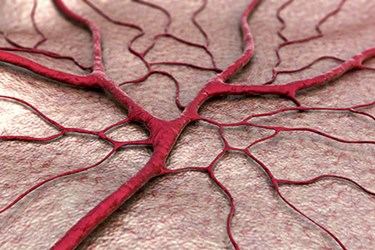Scientists 3D Print Complex Circulatory Network For Transplantable Tissue, Organs
By Joel Lindsey

In a study led by researchers from the University of Sydney, Harvard, Stanford, and MIT, scientists have devised a way to “bio-print” the complex networks of blood vessels necessary for growing complex organic tissue.
“While recreating little parts of tissues in the lab is something that we have already been able to do, the possibility of printing three-dimensional tissues with functional blood capillaries in the blink of an eye is a game changer,” Luiz Bertassoni, a researcher at the University of Sydney and lead author of the study, said in a press release issued recently. “Of course, simplified regenerative materials have long been available, but true regeneration of complex and functional organs is what doctors really want and patients really need, and this is the objective of our work.”
One of the primary goals of the project was to create a bio-printable blood supply complex enough to effectively deliver oxygen and nutrients to all of an organ’s cells, an accomplishment that has remained elusive in the field of bio-printing organs.
“One of the greatest challenges to the engineering of large tissues and organs is growing a network of blood vessels and capillaries,” said Bertassoni. “Replicating the complexity of these networks has been a stumbling block preventing tissue engineering from becoming a real world clinical application.”
In the project, researchers began by using a high-tech 3D printer to manufacture a network of tiny, interconnected fibers, which served as a mold for the artificial blood vessels. The mold was then covered with a cell-rich, protein-based material, which solidified as researchers applied light to it, according to the press release.
After the bio-printed fibers were removed from the protein material, researchers were left with a network of tiny, interconnected channels coated with human endothelial cells.
In less than a week, the endothelial cells self-organized to form blood capillaries that could carry blood and nutrients to the cells of a human organ.
In a study of their newly created, 3D printed vascular networks, researchers found that the new networks promoted better cell survival, differentiation, and proliferation when compared to cells without access to nutrients, according to the press release.
Bio-printing is an increasingly active field, as researchers continue searching for ways to manufacture transplantable and viable human organs. Last month, for example, Med Device Online ran an article describing a project at Brigham and Women’s Hospital — in many ways similar to this latest project — in which researchers had figured out a way to use a 3D printer to manufacture blood vessels using an agarose fiber template.
Image Credit: “Circulatory System.” Eric Villalba. 2012 CC BY 2.0: https://creativecommons.org/licenses/by/2.0/
